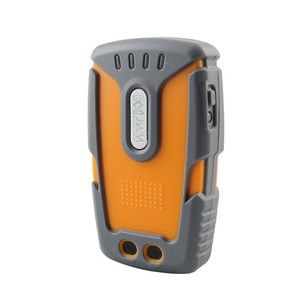
All categories
Featured selections
Trade Assurance
Buyer Central
Help Center
Get the app
Become a supplier

(1794 products available)




















































A patrolling device is a gadget that helps police officers and security personnel monitor and report incidents within a given area. These devices contain advanced technologies that allow users to record data, track their movements, and communicate with other officers in real-time. Businesses and government agencies deploy these devices to ensure public safety and security. There are different types of patrolling devices. They include;
Handheld RFID readers
Handheld RFID readers are portable devices that security personnel and police officers use to monitor predefined points within their patrol routes. These readers contain advanced technologies that allow them to read RFID tags attached to various points. When officers reach a specific point, they scan the RFID tags using these handheld devices. The device then records the time and date of the patrol. This information is vital for reporting and accountability purposes. Handheld RFID readers have a robust construction and are designed to withstand harsh conditions. They also have a long battery life, making them suitable for long shifts. Officers can easily operate these devices with one hand. This ensures they can operate the device while performing other duties. In addition, many manufacturers equip these devices with features like GPS, digital cameras, and communication capabilities.
Fixed RFID readers
Fixed RFID readers are permanently installed at strategic locations along patrol routes. Officers pass these devices when they patrol different points. The device automatically reads the RFID tags on the patrol vehicle. This automatic reading of the RFID tags helps record the patrol's presence at that specific location. The data collected from these fixed RFID readers is vital for monitoring and analyzing patrol patterns and ensuring officers adhere to their assigned routes. Also, the data is uploaded to a centralized system, which helps provide real-time insights into patrol activities. This can help improve the efficiency of patrol operations. Security agencies or police departments typically install these fixed RFID readers in high-traffic areas, intersections, and entry and exit points of buildings or compounds.
Patrol management software
Patrol management software is a vital component of modern patrolling devices. It provides a centralized platform where all the data collected from handheld and fixed RFID readers are uploaded. The primary purpose of this software is to monitor, track, and analyze patrol activities. Patrol management software enables supervisors to view real-time data on officer patrols, including which officers are on duty, their current locations, and their compliance with assigned routes. This software generates reports that provide insights into patrol patterns, response times, and overall efficiency. This data is vital for improving the strategic deployment of officers and enhancing the effectiveness of patrol operations. In addition, some patrol management software allows for the integration of other features like incident reporting, scheduling, and officer communication, creating a comprehensive system for managing patrol operations.
Nature of the environment:
The nature of the environment where the patrolling device will be used is crucial. In a large outdoor space, a GPS-based device will be more suitable. This is because it is more accurate in outdoor settings. A device that uses radio signals will be appropriate for an indoor environment with many walls. This is because radio signals can go through walls easily.
Distance and terrain:
The distance the patrol officer has to cover and the type of terrain will also affect the choice of device. For long distances, a device with long battery life will be required. A device with a strong signal will be needed for rugged terrain.
Integration with other systems:
It is also essential to check if the patrolling device can integrate with other security systems in place. This will ensure that all systems work together to provide maximum security. This makes tracking and monitoring easier.
Budget:
The cost of the device is also important. Many affordable options are available on the market. However, it is essential to consider the cost of maintenance and replacement parts. Choose a device that fits the budget but is also durable and efficient.
User-friendly:
Another essential factor is how easy the device is to use. It should have simple instructions that patrol officers can follow. The device should also be comfortable to carry around, especially for long periods. A user-friendly device will improve the overall efficiency of the security patrol team.
Q1: What is the average battery life of a battery-operated patrolling device?
A1: The battery life depends on the device's features and usage. Many manufacturers offer battery lives ranging from 12 to 20 hours. Some devices have standby times of up to 30 days. Businesses can charge the device after every shift to ensure it is always ready.
Q2: Can users access the patrolling device remotely?
A2: Yes, advanced patrolling devices with cloud-based software allow users to access them remotely. They can view reports, track data, and monitor patrol information from any location using tablets or smartphones. Remote access improves flexibility and enhances security management.
Q3: Can buyers customize the patrolling device?
A3: Many manufacturers allow businesses to request for custom features on the device. This may include custom logos or ID badges. Some companies may request for custom alerts and reports that suit their business needs.
Q4: What are the options for data transfer from the patrolling device?
A4: Data transfer options vary depending on the device model. Some devices use RFID technology to transfer data. Others use USB connection or mobile network for data transfer. Advanced devices have cloud-based software that allows for real-time data transfer and monitoring.